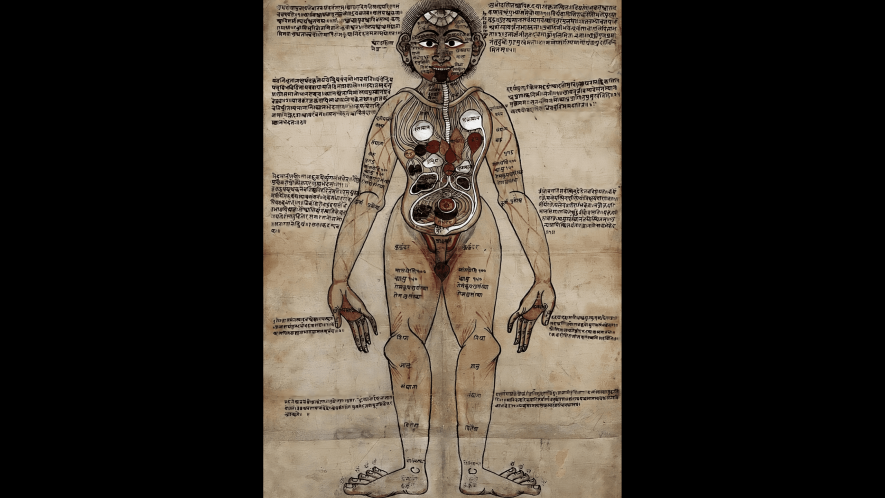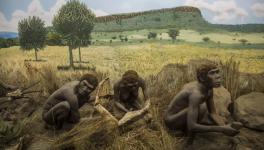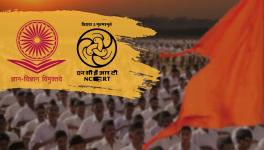History Myth Busting Series - III: Ayurveda -- A Modern Science?

In the past few years, many debates and contentions about history have moved from the academic sphere and entered a wider public forum. A battleground has emerged where particular cultures, narratives and ideologies are pitted against others in order to prove one as dominant and superior to others. The Hindu Right is a major proponent of many such false narratives which aim to establish a particular version of Hindu culture and ideology as the sole and rightful heir to India’s varied history and culture. Such false narratives abandon what the academic world has established through evidence, and they rely on getting traction through popular media, including social media. Newsclick is publishing a series of brief explainers based on evidence-based scholarly research that counters some of these prominent myths propagated by Hindutva forces. Part 1 and 2 of this series can be read here and here.
Ever since the conception of India as a nation, political leaders and historians have attempted to point out past achievements which contemporary Indians can look at for inspiration. These nationalist histories are, in fact, part of any nation-building project.
In the present day, a new variant of this trend of looking back into the past in order to highlight lost glories of Indian civilisation has emerged. It focuses on looking at Vedic and later texts for evidence of the knowledge and practice of advanced science as well as medicine. These vary in terms of scale: some claims go as far as to say that nuclear weapons existed during the time of the Mahabharata, while milder ones attempt to establish the advanced scientific and empirical nature of ancient medicine. With these types of narratives, a unique danger of exaggerating and even falsifying past achievements emerges.
The term ancient or ‘Vedic’ medicine generally refers to practices found within classical Ayurveda, which is now considered an alternative medicine system as compared to modern medicine. The Atharvaveda is considered a predecessor of the Ayurvedic tradition, as it talks about various spells and charms that could cure diseases. Ayurveda’s main texts are the Charaka Samhita and Sushruta Samhita. The Charaka Samhita deals with the theory and practice of medicine while the Sushruta Samhita is a surgical text. The dating of these texts isn’t exact and is highly disputed. Some believe that these were composed between 200 BCE to 300 CE, others that these began to be compiled some centuries BCE till 500 CE and finally some believe that these were most likely compiled starting from sometime right before the start of the Common Era and were likely edited all the way till the 900-1000 CE. Thus, we can understand that Ayurveda is a tradition that has certain Vedic influences but is primarily a tradition that emerged long after the composition of primary Vedic texts.
Before going into detail about the way the Ayurveda system operates and rationalises health as well as diseases, we need to understand how modern systems of science and medicine operate. Modern science is empirical, which means that it is based on observation and experience. It is also verifiable: whatever observations are made have to be replicable by others. It involves experimentation as a means of verifying or falsifying theories. Indeed, in order to be even considered scientific, a ‘theory’ needs to be verifiable or falsifiable in this manner. A claim that a disease is caused by evil spirits, is not verifiable and thus not scientific. Generally, one makes an observation, starts forming a hypothesis, develops an experiment to test it and then allows the results to be open to peer scrutiny.
The narrative of Ayurveda that is currently being propagated is that it features empirical and rational systems of thought that are consistent with the understanding and methodologies of modern science. The Ayurvedic texts do indeed emphasise the need to make observations of physical symptoms in order to arrive at the correct diagnosis and treatment. However, this materialistic dimension is only one of the approaches adopted in the texts. Observation is used to draw non-material conclusions as well. For example, the “twinkling of the eye” is taken as evidence for the existence of the Absolute Soul.
No discipline or system can be considered scientific merely because it puts an emphasis on observation. Experimentation is needed in order to verify these observations and to derive a verifiable theory from them. However, as argued by anthropologist Francis Zimmerman, there is no evidence of this kind of experimentation within the theories found in Ayurveda.
When prescribing and categorising medicinal substances, four different categories were used, that of rasa, vipaka, virya and prabhava. Each level attempts to explain the different effects of these substances. When an initial level did not function as intended, a higher level being different was invoked in order to explain it. The final level essentially explains the substance as having a power beyond reason which is essentially in the nature of the substance. This ends up placing the pharmacological anomalies as eventually being beyond rational explanation. When the facts did not fit the theory, the theory was saved by applying concepts beyond empirical facts. This is in conflict with conceptions of modern science.
One final point to note is that magic also played a significant role within classical Ayurveda. Many passages can be found in the Charaka Samhita that are clearly superstitious. Some mention that wearing certain jewels is curative, a small statue of a man will help change the sex of a foetus to male, and not stepping in the shadows of kin results in good health. The Sushruta Samhita claims that a certain oil can allow one to live a thousand years and that wearing shoes protects one from evil spirits.
There were also limits and constraints that the society of the time had imposed on the practice of medicine. This is best observed when looking at how the study of anatomy was to be carried out according to Ayurvedic traditions. When studying a cadaver, doctors were not allowed to come in direct physical contact with it. Instead, the body was allowed to decompose for seven days, at the end of which the body would be scrubbed off by using a whisk made of grass roots. This limited the observations that doctors could make as they could not dissect and manipulate the cadavers.
In Science in Saffron, science historian Meera Nanda explains the various ways in which this held back the understanding of human anatomy. The external and internal structure of the heart and its functions were completely misunderstood. It was described as a lotus bud which opens when one is awake and closes when one is sleeping. Nothing was known about the brain and the spinal cord. The difference between arteries and veins, along with the blood they carried, was unknown as well. The notions of purity and pollution also derailed progress in anatomical knowledge. There was a fear present in doctors of suffering the stigma of being polluted if they came in contact with dead bodies. Contemporary civilisations around this time, such as the Greeks, did not have the same notions of purity and pollution. They were not limited in the same way as a result.
In Alexandria, Herophilus of Chalcedon (330-260 BCE) undertook systematic dissections of human bodies. He is credited with identifying brain membranes and tracing connections between the nerves, the spinal cord and the brain. Erasistratus of Chios (330-255 BCE) managed to understand the bicuspid and tricuspid valves of the heart and the role they play in determining the one-way flow of blood.
This is not to say that classical and even present day Ayurvedic medicine has no ability to provide relief to certain ailments. Through a process of trial and error, certain plant-based extracts were identified as medicinal substances. These had curative effects when suffering from stomach aches, pain and other minor ailments. Even now with the advent of modern science, these traditional systems of medicine continue to be used because they are part of local customs and comparatively cheaper than modern medicine. The fact that these ‘cures’ work sometimes is enough for them to receive continued support. It is this support that forms the basis for a political agenda of glorifying the tradition and its past.
Harking back to the past in order to glorify it and to embolden present society is a slippery slope. One has to be careful about not imposing modern understandings of science and medicine into past discoveries. Just because ancient Indian doctors knew that the heart was an organ, doesn’t mean that they understood its purpose or how it functioned the same way as we do now. Instead of looking back to past ‘glories’ in order to learn about the great and advanced things that we apparently knew, we should perhaps do the opposite.
The history of medicine in India is not one of great successive achievements but of stagnation caused by negative societal norms. We must learn from the past in order to not let these very norms hold us back in the present.
The writer is an intern with NewsClick. The views are personal.
Get the latest reports & analysis with people's perspective on Protests, movements & deep analytical videos, discussions of the current affairs in your Telegram app. Subscribe to NewsClick's Telegram channel & get Real-Time updates on stories, as they get published on our website.























